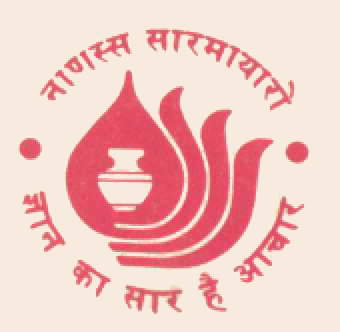

Quiz for 10th Annual Camp - January 2006
1. Which mantra has the essence of 14 Purvas?
Namokar Mantra
2. Who practices the five great vows?
Sadhu
3. What is the purpose of reciting the Namokar Mantra?
Awakening inner energy
4. How many Tirthankars in whole time cycle?
48
5. When did Lord Mahavir attain Salvation ?
527BC
6. Lion is the symbol of:
Mahavira
7. How many divisions are in the time cycle?
Two
8. Jainism belongs to which streams of thought?
Shraman tradition
9. Where did 20 Tirthakars attain nirvan (salvation)?
Sammed Sikhar
10. What do we call our holy scriptures?
Agam
11. How many paps are there ?
18
12. How many categories of punya are there?
9
13. What is the Universe ?
Conglomeration of 6 substances
14. The smallest part of Pudgal is:
Parmanu
15. What is meant by Pajjushan?
Coming to the self
16. Which karma prevents all sorts of good things to happen?
Name karm
17. That which obscures knowledge is:
Gyanavarniya karm
18. What does Mohaniya make wrong?
Faith and conduct
19. What does the Ayu karma determine?
Life span
20. Which karma determines social and economical status?
Gotra karm
21. Those who can not move at will are ?
Sthavar
22. Which karma destroys main qualities of soul?
Ghati karma
23. The process of partial eradication of karmas is called:
Nirajara
24. To ask and give forgiveness for sinful actions is:
Pratikraman
25. What is the emblem of Rishbhadiv?
Bull
26. What is meant by Arihanta?
Arihanta means destroyer of the inner enemies like passions.
27. What is meant by Tirthankar ?
Trithanker is a special Arihanta beause they revitalize the four fold jain order.
28. What is jina ?
Jina means conqueror of passions.
29. What is destructive karma ?
Destructive karma obstructs the true nature of the soul.
30. How many karma are destructive?
There are four destructive karmas.
31. How many virtues of the Arihantas?
There are twelve virtues.
32. How many virtues of the siddhas?
There are eight.
33. How many Acharya virtues are there?
There are thirty-six
34. How many Upadhyays virtues are there?
There are twenty- five.
35. Who are sadhus ?
They practice the five great vows.
36.What does Samayik means ?
Samayik means equanimity.
37. What is the difference between worldly and liberated souls?
Non-liberated souls have karma while liberated souls have no karmas.
38. How many divisions are in the time cycle?
Two: Ascending and descending
39. What does ascending and descending mean?
During the ascending cycle everything progressed and develops. During the descending cycle everything is at its worse .
40. Where do the liberated souls live?
In the upper part of the universe called siddhashila.
41. What does “bhavana” means ?
Deep-thinking or contemplation.
42. How do we increase our memory power ?
Mahapran Dhwani.
43. How many segments are in each division of the time cycle?
Each division has six segments .
44. In which aara are we in now ?
The fifth aara.
45. What are the different destinies in which we may be reborn ?
There are four destines: Human being, celestial beings, subhuman beings, and infernal beings.
46. How many karmas are there ?
There are eight.
47. What is non- destructive karma?
They do not obstruct the true nature of the soul .
48. What is meant by Siddhas ?
Siddhas have attained salvation.
49. What are Acharyas?
Acharyas are spiritual leaders and lead the religious order.
50. Who are Upadhyays ?
They study jain scriptures and teach them to monks and nuns.
51. How many Tattvas ( fundamentals ) are there?
There are nine.
52. What are the names of the first four Tattvas?
Living beings, matter, merit, and demerit.
53. What are the last five Tattvas?
Influx of karma, bondage of karma, stoppage of karma, shedding of karma, liberation.
54. How many Dravyas are there ?
There are six.
55. What are the names of the Dravyas?
Medium of motion, medium of rest, space, time, matter, jiva .
56. What is the characteristic of the soul
Chetana (consciousness).
57. What are the five great vows of monks and nuns?
Ahimsa ( non-violence), truth, non-stealing, celibacy, non-possessiveness .
58. What is meant by non-violence?
Abstaining from evil thinking, evil speaking, and evil deeds.